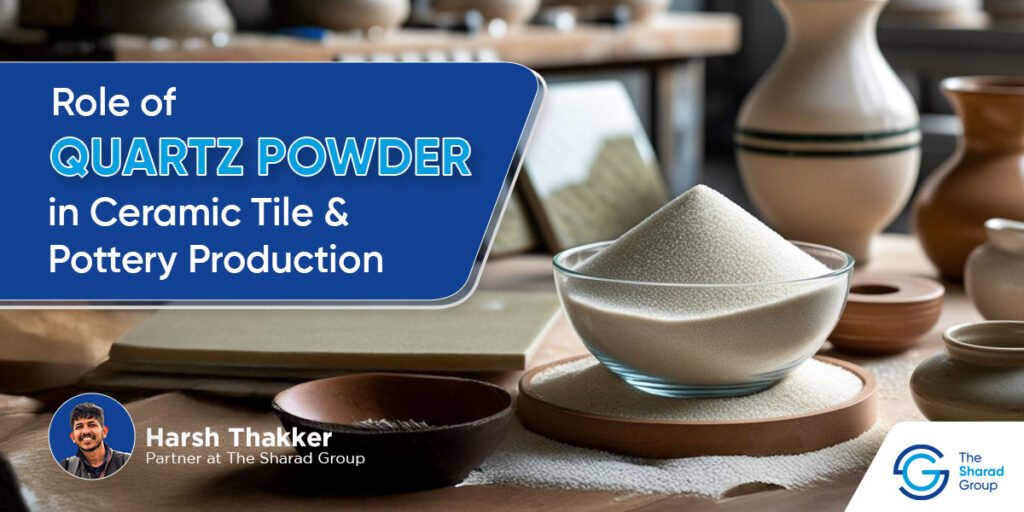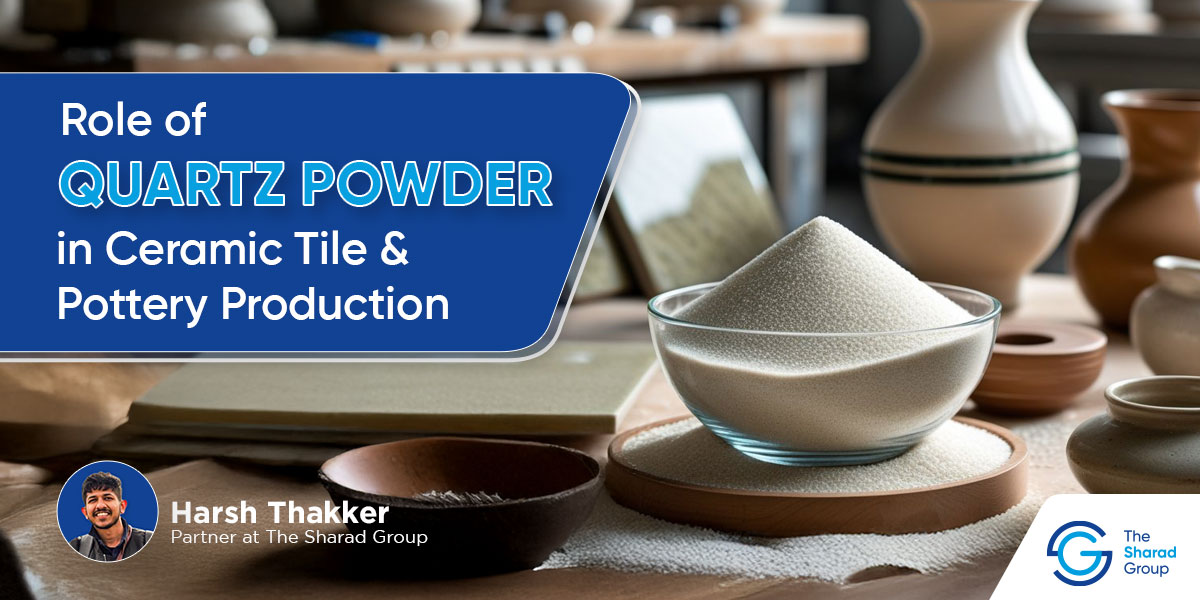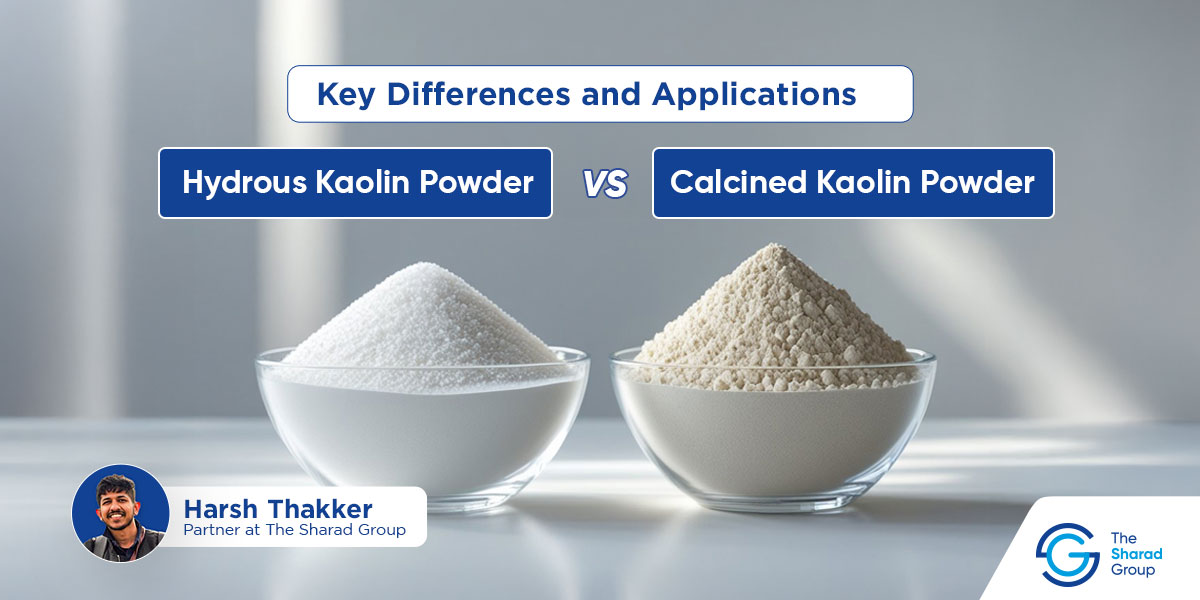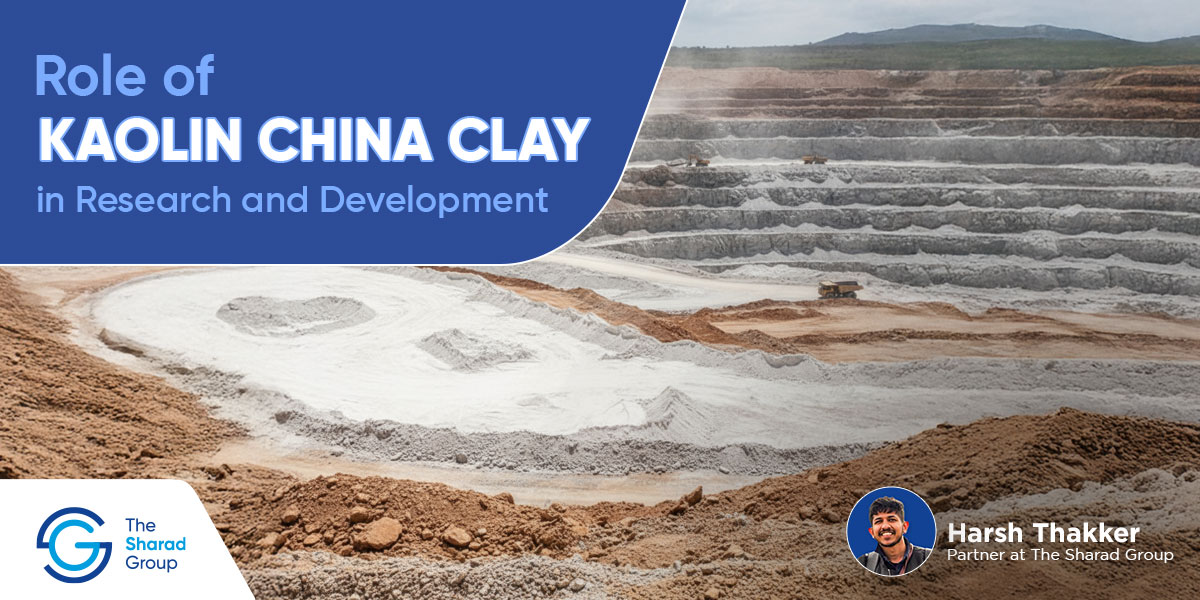The global quartz powder market is expected to hit nearly $29 billion by 2032. But what’s even more important is that 26% of this demand is driven by just one industry – the ceramics segment.
Quartz powder is used for materials like porcelain and construction activities that require a widely available yet relatively cheap raw material.
In this blog, we’ll break down the critical role that quartz powder plays in ceramics, tile and pottery production. We’ll cover the key properties of quartz powder that make it ideal for ceramics, the different types of quartz powder used in ceramics manufacturing, and how you can get a steady supply of ceramics for your production processes.
So, whether you’re looking for quartz powder for pottery, ceramics, or construction, read on to find out how it can help you and where you can get it!
Role of Quartz Powder in Ceramic Tile & Pottery Production: Table of Contents
- What is quartz powder?
- Key Properties of Quartz Powder for Ceramics
- Why is Quartz Powder Essential in Ceramics & Pottery Production?
- Manufacturing Processes Using Quartz Powder
- Quartz Powder in Different Ceramic Types
- The Sharad Group: Your Reliable Quartz Powder Supplier
- Role of quartz powder in Ceramic Tile & Pottery Production: FAQs
What is Quartz Powder?
Puartz powder is a high-purity variant of silica sand. Its deposits have formed over millions of years of natural weathering of quartz-rich rocks around the world.
So, it’s most likely to be found in areas where there’s a combination of quartz crystalline rocks and temperate conditions that encourage its movement and deposition. This includes Asian countries like India and China, which are incidentally also the biggest consumers of quartz powder!
Quartz Powder is also very different from the regular sand you might see at beaches, in sandpits, or in bricks. This is because quartz powder has a higher silica oxide content and lower iron oxide levels.
Next, let’s find out why quartz powder is a vital component in the ceramics industry.
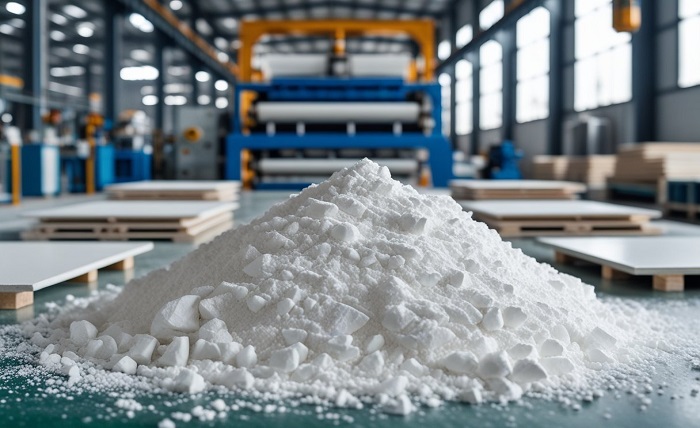
What's on this page:
ToggleKey Properties of Quartz Powder for Ceramics
| Property | Description | Relevance in Ceramics |
| Chemical Formula | SiO₂ (Silicon Dioxide) | Primary component for glaze and body strength. |
| Purity | ≥95% SiO₂ (Industrial grade) | Higher purity = fewer defects in firing. |
| Color | White, off-white, or translucent (varies with impurities) | Whiter sand = brighter ceramic finishes. |
| Melting Point | ~1,710°C (3,110°F) | Withstands kiln temperatures without deforming. |
| Hardness (Mohs) | 7 (Comparable to quartz) | Enhances durability of fired ceramics. |
| Density | 2.65 g/cm³ | Influences slurry viscosity in casting. |
| Particle Size | 45–325 mesh (Fine to ultra-fine) | Finer grains improve glaze smoothness. |
| Thermal Expansion | Low (0.5–1.5 × 10⁻⁶/°C) | Reduces cracking during heating/cooling. |
| Refractoriness | High (withstands prolonged heat) | Critical for stoneware/porcelain firing. |
| Acid Resistance | Insoluble in acids (except HF) | Ensures chemical stability in glazes. |
| Iron Content | <0.5% (Premium grade) | Low Fe₂O₃ prevents yellowing in white ceramics. |
| Moisture Content | <0.1% (Dried) | Prevents bloating in kilns. |
Also Read: Why is Quartz Powder Used for Glass Manufacturing?
Why is Quartz Powder Essential in Ceramics & Pottery Production?
There are four key reasons why quartz powder is very important for the ceramics industry:
- Structural Integrity: quartz powder’s natural toughness, due to uniform particle size, prevents deformation and shrinkage during processes like firing and baking.
- Thermal Stability: quartz powder can withstand extreme kiln temperatures of up to 1,710°C without cracking or breaking!
- Glaze Formation: When you see that shiny, polished finish on ceramics or porcelain pots, you’re seeing quartz powder’s properties at work!
- Vitrification: quartz powder can turn into a glass-like liquid substance without crystalizing. This, for example, enhances porcelain’s translucency and stoneware’s strength.
In short, different physical and chemical properties of silica can help you achieve different results for your ceramic tile and pottery products.
Manufacturing Processes Using Quartz Powder
Next, let’s check out the key manufacturing processes that use quartz powder:
1. Body Formulation (Clay & Quartz Powder Blending)
The use of quartz powder in creating clay and silica blending bodies is very important. It reduces shrinkage during the drying/firing phases by up to 4%.
It also improves the structural integrity of ceramic products by preventing warping in large tile slabs.
For example, quartz powder is used for ensuring low porosity and high strength in vitrified tiles, which is why it is one of the main ceramic tile raw materials in the world!
Here’s how it works: quartz powder (20-30% by weight) is mixed with clay (kaolin, ball clay) and fluxes (feldspar) to form a workable ceramic body.
2. Casting & Molding (Slip Casting)
Quartz powder also does an excellent job of acting as a filler that reduces cracking during demolding for intricate products like vases.
Additionally, it can accelerate water absorption in plaster molds, thereby accelerating the production process!
So, the next time you see toilets and sinks with smooth surfaces and high-quality finishes, you can be sure that they wouldn’t exist without quartz powder.
To achieve this look, feel, and absorption level, quartz powder is added to liquid clay slurry (known as “slip”) to enhance particle suspension + mold filling.
3. Glaze Composition (Glass-Forming Agent)
Quartz powder lowers the melting temperatures of glazes by 500°C when combined with fluxes. This creates a durable surface that can resist scratches.
This is why it’s used to produce ceramic floor tiles.
To take just one example, glossy tableware glazes depend heavily on ultra-fine quartz powder of up to 325 mesh for defect-free finishes!
This is done by melting ground quartz powder (50-60% of glaze) with fluxes (also called soda ash) to form the glossy coating that we see and admire.
4. Firing (Vitrification & Thermal Stability)
Lastly, quartz powder is used for its vitreous quality to turn porous clay into non-porous ceramics.
Simply put, porcelain becomes translucent rather than crystalizing. This also prevents thermal shock cracks, which helps us create ovenware like baking dishes!
Stoneware pottery is another example of a product that uses quartz powder’s high melting point to survive repeated, high-temperature heat cycles.
To do so, manufacturers make quartz powder react with alumina in clay at high temperatures ranging between 1,200–1,400°C!
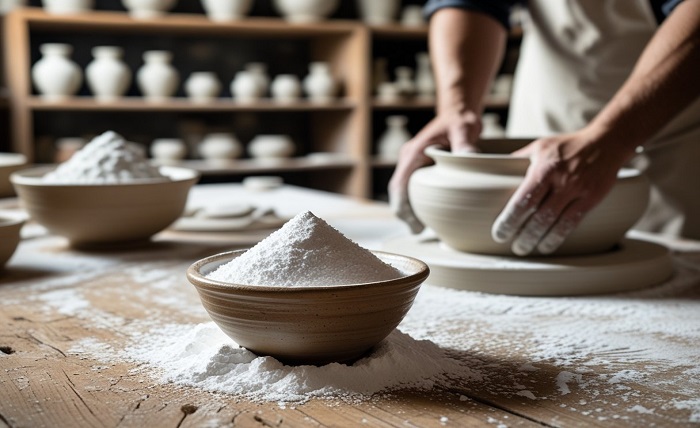
Quartz Powder in Different Ceramic Types
Different ceramic types use different grades of quartz powder to achieve their respective finishes and looks:
- Porcelain: 20-30% silica for high vitrification (compactness of the particles under heat without crystalizing).
- Stoneware: 15-20% silica for high durability and heat resistance, but coarser finishing.
- Earthenware: 10-15% silica for reduced shrinkage while maintaining strength under heat or pressure.
The Sharad Group: Your Reliable Quartz Powder Manufacturer
As we’ve seen through this blog, quartz powder is one of the most important components of the ceramics industry. Without it, we wouldn’t have access to shiny and smooth tiles, delicately shaped vases, ovenproof vessels, and heat-resistant stoneware + earthenware.
If you, too, want to leverage the qualities of quartz powder for your ceramics production business or are looking for high-grade pottery clay ingredients, all you need is a steady quartz powder manufacturer who can ensure a timely delivery of quality sand.
That’s where we come in – at The Sharad Group, we have been in the quartz powder production and manufacturing industry for over 6 decades. With access to quartz-rich mines and the best supply chains, we excel in supplying quality quartz powder to both domestic and international clients.
So, reach out to us to get your free quartz powder sample, a complimentary quote, and an estimated delivery timeline for your supply of high-grade quartz sand!
Role of quartz powder in Ceramic Tile & Pottery Production: FAQs
1. What are the main ceramic tile raw materials?
Ceramic tiles are made from:
- quartz powder for strength.
- Kaolin/ball clay for plasticity.
- Fluxes like feldspar to lower melting points.
Quartz powder (20-30%), in particular, ensures durability and low shrinkage in tile raw materials.
2. Why choose a specialized quartz powder manufacturer?
A trusted quartz powder manufacturer (like The Sharad Group) will guarantee high-purity (≥95% SiO₂), consistent particle size, and low iron content. All three of these conditions are critical for defect-free ceramics and glazes.
3. How is quartz powder used for pottery?
Quartz powder is primarily used for pottery to reduce shrinkage in clay bodies, create glossy glazes, and prevent cracks during firing. It’s vital for stoneware, porcelain, as well as earthenware.
4. What pottery clay ingredients work best with quartz powder?
We recommend blending quartz powder with pottery clay ingredients like:
- Kaolin for whiteness.
- Ball clay for plasticity.
- Feldspar as a flux.
Ideal ratios depend on the ceramic type (e.g., 20% silica content is ideal for porcelain).
5. Can I substitute regular sand for quartz powder in ceramics?
No! Regular sand lacks the purity (≥95% SiO₂), thermal stability, and fine particle size of quartz powder, leading to weak ceramics and glaze defects.
6. What type of quartz powder is used in pottery and ceramics?
Ceramics require high-purity quartz powder. This material is valued for its role as a structural filler. Its specific quartz powder properties – especially its predictable thermal expansion and contraction during firing – are essential for preventing cracks and defects in finished pottery, tiles, and refractory bricks.

